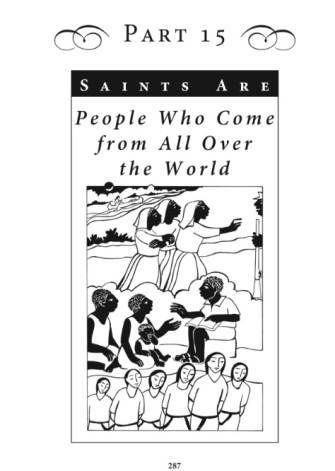This was an excellent bit of history – well-written, clear, and faithful to the sources.
I came upon it when I saw the author – UC Berkeley history professor Margaret Chowning’s most recent book (published this month) mentioned in list of forthcoming historical works. The new one is Catholic Women and Mexican Politics, 1750–1940 – “How women preserved the power of the Catholic Church in Mexican political life.”
I thought – well, that’s interesting. I’ll have to read that. It’s too early for it to be available via interlibrary loan, so I wondered what else she’d written and found this. Let’s go.
Before I present the summary (which I am going to crib from another website) – let me tell you what I appreciated about the book, what it illuminated and the context it helps establish for thinking about religious life today. The summary I’m going to post is pretty long, and some of you might drift away before the end of that, so I’ll make my points first.
I say to you again and again that reading history – and by that I mean accounts relating small corners of the past, not sweeping general works – can be very helpful in keeping your bearings in the present. Of course, it’s essential to have a basic understanding of the past, especially if we’re talking Church, which we are in this space, most of the time. But beyond that, to read a monograph like this – or to even a summary of it – highlights a lot of plain truths, mainly this one:
Life in the church is always lived by complicated human beings in complicated times. Church structures are always impacted by their cultural, social and political context. They shift, change and develop. People argue. People fight. People in spiritual positions act out of non-spiritual reasons all the time. In fact, in this life on earth, in this incarnational existence, is there any other way?
So in this case, I was prompted, for one, to think a lot about the role of religious orders and their sustenance. Very often today, we look at the struggles and the general decline (with some exceptions) of women’s religious life, and we compare it to the apparent flourishing of the same in the past, and we can see nothing but a reason for condemnation of the present. Faithless, we say. Look what previous generations were able to support!
Well, let’s look at how those Mexican enclosed convents existed. The choir nuns – fully professed – were at the center of convent life. These choir nuns had to be of certain racial stock (not indigenous, not even a drop), and they entered with a dowry. The dowry was then generally invested and used as a lending source. In short, most of these convents were banks and mortgage institutions – that’s how they financially survived, and for a time, flourished. It wasn’t because of incredibly faithful donors who sacrificially made it all possible. It was because of canny financial activities. There was a time in which the convent at the heart of this book suffered financially, for several reasons, including an excess of expenditures, but also because the majordomo hired to collect rents and interest wasn’t doing his job well.
I’m not saying there’s anything wrong with that system. I don’t know enough to judge that. It’s just the way it was. All I’m saying is that knowing this gives essential context when we attempt to compare the apparent strength of religious life in respective eras.
Before the summary, I’ll skip to the end of the story. The Mexican government suppressed all convents in 1863. Many enclosed nuns tried to stay together after the suppression, taking up residence in private homes, attempting to maintain some sort of common prayer life. The Purisma nuns were apparently not able to do so – Chowning can’t find any evidence. However, in a rather moving coda, when Chowning visits San Miguel in the writing of the book, a sister at the church tells her the story of more recent history. Four sisters attempted to return in thee 1920’s, but were driven out, of course, by yet another revolution. But then:
So here you go – this is from a review of the book, found here:
Before you read, however – something this reviewer omits is that the foundress was a (very) young woman from San Miguel named María Josepha Lina. An orphaned heiress, she very much wanted to continue her father’s wish for establishing a convent in the town. She was influenced to support the Conceptionists, despite the fact that she had reformed (austere) tendencies – and that had been her father’s intention – probably because of a spiritual advisor’s ties to the Conceptionists. The Conceptionists were not reformed – they followed the more worldly model of female religious life. So you can see that there are potential problems from the beginning. So:
The rebellion revolved around the issue of reform. La Purísima was established as a reformed convent, where nuns strictly observed their vows of poverty and enclosure and lived the vida común (common life), sharing meals and sleeping in communal dormitories. Donadas (lay sisters) and nuns did convent work, in place of personal servants.
The first abbess interpreted the convent’s mission narrowly, insisting on a taxing devotional schedule even though nuns had multiple responsibilities beyond spiritual duties. A rebellious faction emerged, led by Phelipa de San Antonio.
Like the abbess, Phelipa had come from an unreformed Conceptionist convent in Mexico City to help found La Purísima. She was the first to suffer an illness that later moved among her followers. Described as the salto (jumping sickness) or the mal, it was characterized by sufferers’ trancelike state and jerky movements. Afflicted nuns stayed in their cells, received extra food, and were released from many obligations. Contemporaries suspected fakery, although Chowning considers the possibility of somatic causes, at least in Phelipa’s case. Yet Phelipa and others may also have manipulated the symptoms in order to resist the vida común and undermine the authority of the abbess and bishop. The abbess and her like-minded successor were forced out after the first period of rebellion and, after six peaceful years, Phelipa became abbess. Reform-minded nuns complained to the bishop about Phelipa’s administration. Under her tenure nuns wore secular clothes, received male visitors, and mounted plays.
It was during this period that the salto spread. Although an episcopal investigation failed to remove Phelipa, she was not reelected, probably due to factors including rigged elections and the untimely death of the esteemed pro-reform foundress, possibly seen as a martyr.
In 1792, however, Phelipa’s wishes came true (although posthumously); the bishop imposed the vida particular (individual life) on La Purísima, with nuns receiving stipends for their individual needs. This was touted as a solution to ongoing financial problems, partially caused by the remarkable, and endowment-depleting, practice of letting dowryless donadas profess as white veil nuns after a decade of service.
However, the adoption of the vida particular was as much an ideological as a financial decision; Chowning argues that it was inspired by the belief of the bishop and his advisers in free market ideals such as rationalism and individualism. The convent, like the region, suffered economically during the war of independence, but recovered afterwards, although recruitment, a longstanding problem, decreased precipitously. This was due partially to anticlerical characterizations of nuns as prisoners and non-service convents as useless, and to laws making church property taxable, which affected finances. Both factors made convents less attractive to potential novices and their families. In addition, the bishop forced La Purísima to radically limit admissions—because it was not attracting elite, dowried women, new entrants added nothing to the endowment. Finally, with the Liberal government’s closure of convents in 1863, the nuns were turned out.
As I said, this was well-written history. The only thing missing was a timeline of major events. That would have been helpful. I’m looking forward to reading her newest book:
What accounts for the enduring power of the Catholic Church, which withstood widespread and sustained anticlerical opposition in Mexico? Margaret Chowning locates an answer in the untold story of how the Mexican Catholic church in the nineteenth century excluded, then accepted, and then came to depend on women as leaders in church organizations.
But much more than a study of women and the church or the feminization of piety, the book links new female lay associations beginning in the 1840s to the surprisingly early politicization of Catholic women in Mexico. Drawing on a wealth of archival materials spanning more than a century of Mexican political life, Chowning boldly argues that Catholic women played a vital role in the church’s resurrection as a political force in Mexico after liberal policies left it for dead.
Read Full Post »











































































